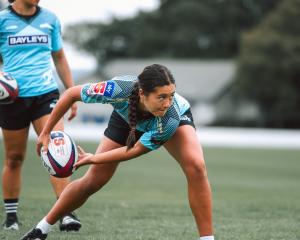Rugby appears to be in good financial health.
Most unions are in the black but there are worrying signs about the numbers of players taking the field.
Business adviser Deloitte has released its annual State of the Union report which looks at the health of the provincial unions across the country and the game in general.
All 14 of the Mitre 10 Cup unions have cash reserves although the big unions such as Auckland and Canterbury have the most.
The financial impact of the British and Irish Lions tour of New Zealand last year had a major impact on the provincial unions.
The boost given to the Auckland union by hosting two tests at Eden Park enabled the collective surplus of the 14 unions to rise to $3.8 million.
Otago recorded a surplus in the 2017 year of just under $19,000, the lowest of the 14 Mitre 10 Cup unions in terms of revenue.
Auckland, Wellington and Canterbury generated the most revenue followed somewhat surprisingly by Bay of Plenty.
Waikato has made a big recovery. After being in the red by more than $500,000 two years ago it is now has some small reserves.
The report said revenue levels were expected to remain constant this year although it was bound to slip in Auckland as the union was not hosting two Lions tests.
The total revenue for the provincial unions was $79.2 million, a 2.8% from $77 million in 2016.
The largest earner was grants and sponsorship which accounted for 69% of revenue. Other revenue brought in 20% while match-related income made up the other 11%.
The biggest rise in expenditure was in team and match-related costs which went up 4.3%, while administration expenses increased by $600,000.
The report said disappointingly, while total revenue increased by 2.8%, growing-the-game spending increased only 1.5% from 2016.
The increase in team and match-related costs may reflect the recognition from the unions that greater expenditure in this area correlates to greater team performance and therefore greater match-related income.
It may appear as though some unions are pumping an increasing amount of money into their top teams as team expenses have continued to increase since 2013.
However, 2013 was the the low point of team expenditure and in 2017, team payments are still 17.7% below the expenditure on 2007.
As for player registrations, more females are playing the game but they are not offsetting the number of males dropping out of the game.
For the Mitre 10 Cup unions, collectively the number of player registrations declined by 178 (0.1%) from 2016 to 2017.
The age-group that drove the decline was the senior grades (21-year-olds and over) as it decreased by more than 2,000 registrations, a drop of 8.9%.
Since 2010, the senior grades have decreased in size by 11.0%, driven by the drop in males of 13.8%, offset by the positive increase in female in the senior grades by 63.8% in the same period.











